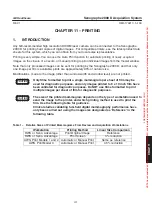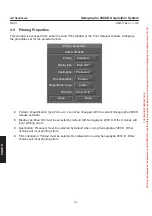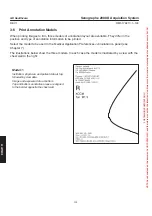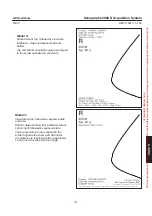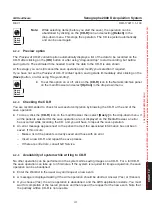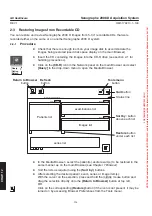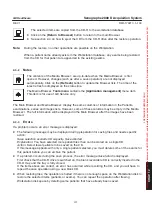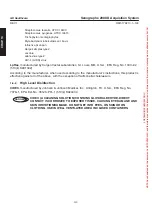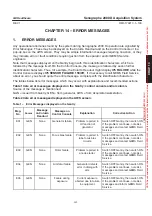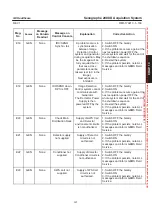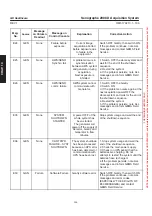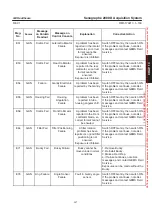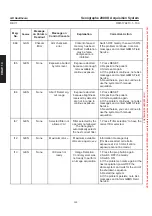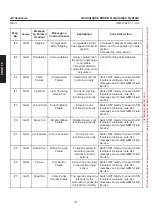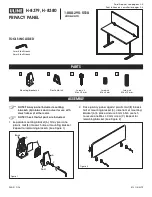
CHAP
. 13
GE Healthcare
Senographe 2000 D Acquisition System
REV 1
OM 5179217–1–100
137
CHAPTER 13 – MAINTENANCE
1.
CLEANING AND DISINFECTION
1-1
Monitor cleaning instructions
It is important that monitors used for viewing mammographic images be kept clean and free of
fingerprints, dust, etc.
These instructions are applicable to LCD and CRT monitors.
Use a microfiber cloth to clean the monitor screen and housing. If necessary, moisten the cloth with
either clean water or ethyl alcohol (up to 96%). Do not allow any drops of cleaning liquid to remain on
the surface; extended contact may cause discoloration of the surface.
Do not use isopropyl (“rubbing”) alcohol.
Do not use cleaning agents which may attack the surface, such as petroleum
(mineral) spirits.
The front panel is extremely sensitive to mechanical damage. Avoid all scratches,
knocks, etc.
Do not apply the cleaning liquid directly to the monitor housing or screen.
Do not allow the cleaning liquid to enter the monitor housing; be sure to dampen the
cloth sparingly.
1-2
General Information about disinfection
Adequate cleaning and disinfection is necessary to prevent disease
transmission. Be sure to thoroughly clean and disinfect equipment surfaces that
contact the patient and all equipment surfaces likely to become soiled during
use.
The level of disinfection required for a patient contact device depends on the type of contact that
occurs:
D
A CRITICAL device is one which routinely penetrates the skin or mucous membranes during use
and therefore poses a high risk of infection if it is not sterile. Such devices (e.g., surgical
instruments, needles, catheters or infusion sets) must be made
sterile
prior to use.
D
A SEMI-CRITICAL device is one which contacts mucous membranes but does not penetrate
normally sterile areas of the body. Such devices (e.g., endoscopes, speculum) should be made
sterile whenever practical, but
high level disinfection
is usually acceptable prior to use.
D
A NON-CRITICAL device is one which contacts intact skin during routine use. Such devices (e.g.,
patient exam tables, blood pressure cuff, etc.) present a much lower risk of infection and,
therefore, a
low level disinfection
is usually acceptable. However, in cases when there is concern
for cross contamination, an i
ntermediate level disinfection
should be done between patients.
NOTICE
CAUTION
FOR
TRAINING
PURPOSES
ONLY!
NOTE:
Once
downloaded,
this
document
is
UNCONTROLLED,
and
therefore
may
not
be
the
latest
revision.
Always
confirm
revision
status
against
a
validated
source
(ie
CDL).

